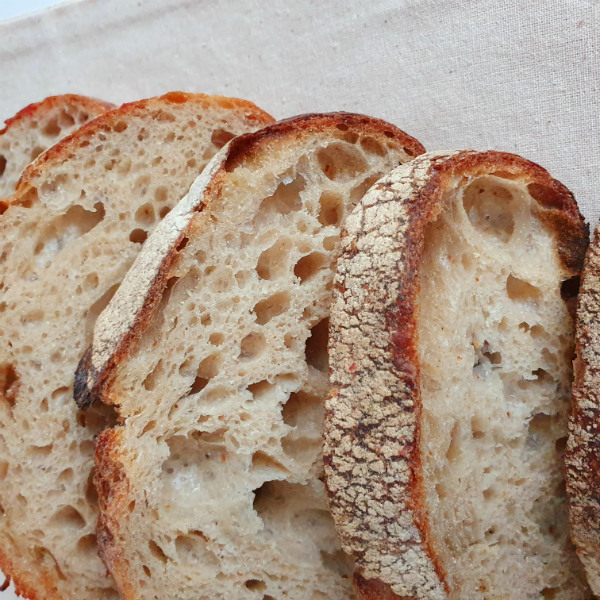This month’s bread is a loaf with a good back story and a high feel-good factor: The EcoLoaf!
Did you know that New Zealanders throw away 157,389 tonnes of food a year? That’s the amount of food that could feed the population of Dunedin for nearly three years!
And take a guess at the food type at the top of the list of the most wasted in this country? Yes. It’s bread. New Zealanders waste over $62 million dollars of bread every year!
Hence the baker’s ingenious idea to use leftover bread and flour to make this month’s special. We are making the most of what we’ve got to reuse and upcycle it.
Firstly: Tritordeum flour
You may remember this ingredient from last month’s special. Tritordeum is a cross between durum wheat (Triticum durum) and a variety of wild barley (Hordeum chilense). It is GMO-free, low in gluten and higher in proteins, fibre and lutein. Tritordeum is also a more sustainable as a crop and has low environmental impact. It’s a robust crop which needs little water and few fertilisers to grow and this more resistant to high temperatures and climate change.
Secondly: Khorasan flour
We used Khorasan flour in our April Special. It’s an ancient, heirloom grain which is also higher in protein than modern wheats and richer in healthy fats, vitamins and minerals than standard wheat.
Thirdly: Sourdough breadcrumbs
Although Wild Wheat donates leftover bread to a variety of charities and organisations throughout Auckland, we still have days when there is too much bread. The EcoLoaf is a novel way of using our customer’s leftovers: day-old sourdough is turned into breadcrumbs and then coupled with the next ingredient and process, we reuse it in this month’s special.
Lastly: the ZAPMILL™ Friction Cooker
We discovered this marvellous piece of machinery back in March. Friction cooking is a ultra-quick way to cook a range of grains, legumes and starches into cereal or snack form in a matter of seconds. The benefits of using this process means the grains hold higher levels of nutrients than traditional ways of processing them.
The result?
In the Ecoloaf, we split the leftover breadcrumbs 50/50 with brown rice and cook this in the Zapmill, adding water to the product to mix it back into a dough. This dough is added to our traditional white starter and mixed with flours we haven’t quite used up from this year’s specials: Khorasan and Tritordeum. As with all our sourdoughs, the dough rests for the requisite 48 hours to develop the flavours and make it easier to digest. And you’ll be amazed at how light and fluffy it is, with a crunchy crust and subtle flavour.
The Ecoloaf will go with anything, and be quite the conversation piece. This is a loaf you can eat with a clean conscience.

